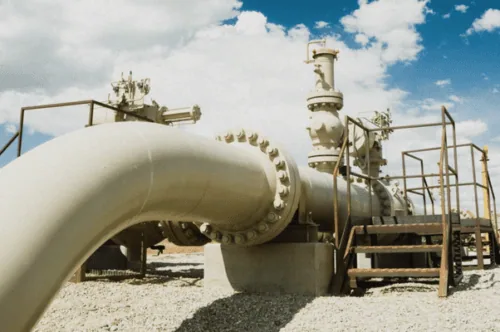What Are The Most Common Gases Metered?
Accurate gas flow measurement is critical in a wide range of industries, from manufacturing and energy production to healthcare and environmental monitoring. Different gases have unique properties that require specific measurement techniques and technologies. In this blog, we’ll explore the most commonly measured gases in flow applications, their uses, and the challenges associated with measuring them.
1. Natural Gas
Natural gas is one of the most widely measured gases, particularly in the energy sector. It is primarily composed of methane (CH₄) but often contains other hydrocarbons, nitrogen, carbon dioxide, and trace elements. Measuring natural gas flow is essential for billing, efficiency optimization, and regulatory compliance in utilities, power plants, and industrial facilities.
Measurement Challenges:
- Variability in gas composition
- High-pressure conditions in pipelines
- The need for custody transfer accuracy
Common Flow Measurement Technologies:
- Turbine Flow Meters
- Ultrasonic Flow Meters
- Coriolis Flow Meters
- Thermal Mass Flow Meters
2. Oxygen (O₂)
Oxygen measurement is crucial in industries such as healthcare, metal production, and chemical manufacturing. In hospitals, oxygen flow meters ensure patients receive precise amounts of oxygen, while industrial applications use oxygen for combustion processes and chemical reactions.
Measurement Challenges:
- Sensitivity to temperature and pressure changes
- Risk of contamination in medical applications
Common Flow Measurement Technologies:
- Turbine Flow Meters
- Thermal Mass Flow Meters
- Differential Pressure (DP) Flow Meters
- Rotameters (Variable Area Flow Meters)
3. Carbon Dioxide (CO₂)
Carbon dioxide is extensively measured in industries like beverage production, environmental monitoring, and agriculture. In breweries and soda manufacturing, CO₂ flow meters help regulate carbonation levels. Environmental agencies measure CO₂ emissions to monitor climate impact and enforce regulations.
Measurement Challenges:
- Condensation issues in humid environments
- Variability in temperature affecting gas density
Common Flow Measurement Technologies:
- Turbine Flow Meters
- Coriolis Flow Meters
- Thermal Mass Flow Meters
- Infrared (IR) Sensors (for concentration measurement)
4. Nitrogen (N₂)
Nitrogen is a critical gas in industries such as food packaging, pharmaceuticals, and electronics manufacturing. It is used to create inert environments that prevent oxidation and contamination.
Measurement Challenges:
- Ensuring leak-proof flow measurement in controlled environments
- Varying flow rates in industrial applications
Common Flow Measurement Technologies:
- Turbine Flow Meters
- Mass Flow Controllers (MFCs)
- Thermal Mass Flow Meters
- Differential Pressure Flow Meters
5. Hydrogen (H₂)
With the rise of hydrogen as a clean energy source, accurate flow measurement is becoming increasingly important. Hydrogen is used in fuel cells, industrial refining, and chemical processing.
Measurement Challenges:
- Low molecular weight and high diffusivity
- High pressure in hydrogen pipelines
- Risk of leaks due to small molecule size
Common Flow Measurement Technologies:
- Turbine Flow Meters
- Coriolis Flow Meters
- Thermal Mass Flow Meters
- Ultrasonic Flow Meters
6. Compressed Air
Compressed air is widely used in manufacturing, automation, and HVAC systems. Measuring compressed air flow helps ensure energy efficiency and system performance.
Measurement Challenges:
- Variability in pressure and temperature
- Condensation risk affecting sensor accuracy
Common Flow Measurement Technologies:
- Turbine Flow Meters
- Thermal Mass Flow Meters
- Vortex Flow Meters
- Differential Pressure Flow Meters
7. Argon (Ar)
Argon is commonly used in welding, metal fabrication, and the semiconductor industry. It is often measured in applications where inert gases are required for shielding purposes.
Measurement Challenges:
- Precise low-flow measurement for welding applications
- Ensuring purity in high-purity industrial applications
Common Flow Measurement Technologies:
- Turbine Flow Meters
- Mass Flow Controllers (MFCs)
- Thermal Mass Flow Meters
- Coriolis Flow Meters
8. Chlorine (Cl₂)
Chlorine gas is used in water treatment, chemical production, and sanitation. Due to its highly reactive nature, precise measurement is crucial for safety and process control.
Measurement Challenges:
- Corrosive properties requiring durable materials
- Gas density variations due to temperature changes
Common Flow Measurement Technologies:
- Turbine Flow Meters
- Thermal Mass Flow Meters
- Coriolis Flow Meters
- Differential Pressure Flow Meters
Choosing the Right Flow Meter for Gas Measurement
Selecting the appropriate flow meter depends on several factors, including:
- Gas composition and properties
- Required accuracy level
- Operating pressure and temperature conditions
- Industry-specific compliance and safety requirements
Understanding the characteristics of different gases and the challenges associated with their measurement helps industries optimize performance, ensure regulatory compliance, and maintain operational safety. Whether dealing with natural gas, industrial gases, or specialty gases, choosing the right flow measurement technology is critical to efficiency and precision.
Do you need help selecting the best flow meter for your gas application? Contact us today to discuss your requirements!

